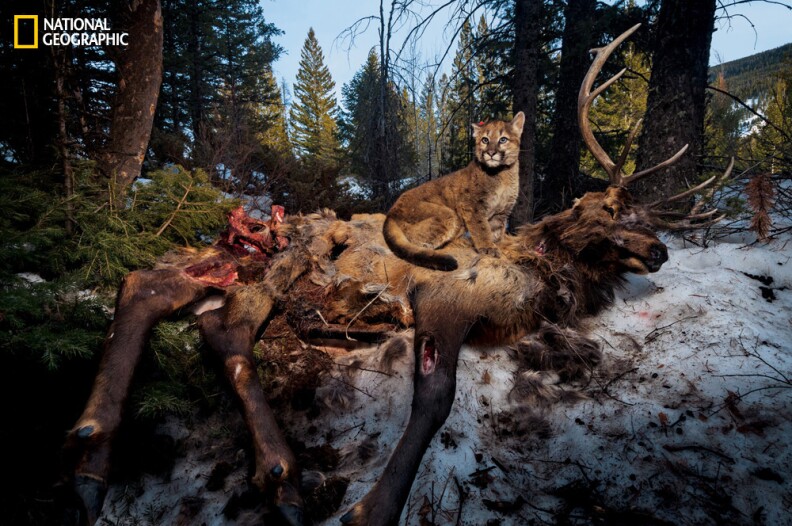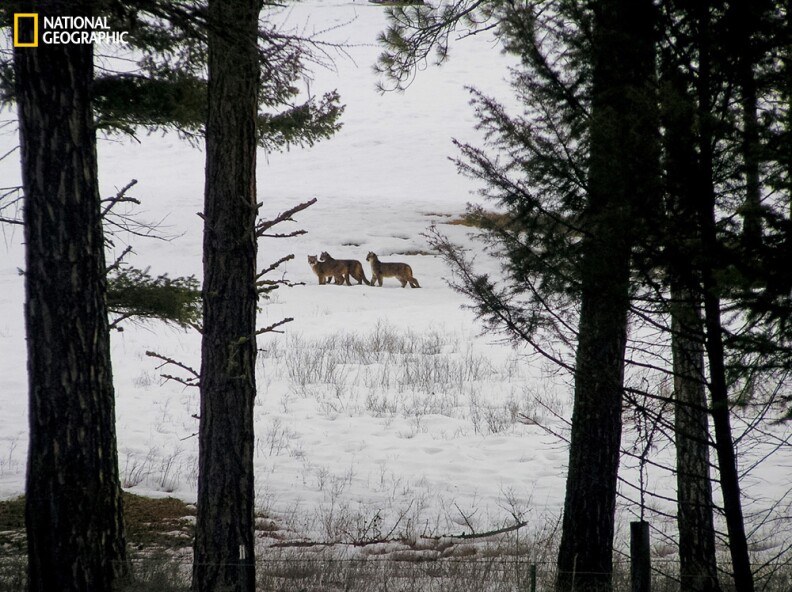How do you take a photo of an animal you'll never see?
That was wildlife photographer Steve Winter's conundrum when he set out to capture the ultimate example of urban wildlife for National Geographic's December 2013 issue: a cougar that roams the hills of Griffith Park in Los Angeles.
Though cougars are shy and nocturnal, scientists have been studying and tracking the animals for years. But rarely have they been seen going about their daily — or nightly — lives.
RELATED: Audiovision: Cougars like you've never seen before
After being alerted to the presence of at least one mountain lion in the hills of L.A. by Jeff Sikich, a wildlife biologist with the National Park Service, he arranged to have a special tracking collar affixed to the animal to help pinpoint where the cougar was every two hours. This made it possible for both Winter and scientists to study his patterns and to figure out where to place a series of remote, infrared cameras.
Winter really wanted was a "money shot" of the cat in front of the Hollywood Sign. A shot Sikich at first thought was "crazy."
"Eight months later he said, 'guess what? We just had a trail cam picture from the bobcat study the National Park Service is doing in Griffith Park. We have a cougar in Griffith Park'," said Winter. "There was my challenge...we just needed to figure out where he walked."
Then came the waiting game. It took a whole year to get one shot of the cougar — dubbed P-22 — but the results are breathtaking. The first shot of P-22 depicts the cat posing on a ledge with the city of L.A. illuminated in the background.
“Cats are habitual animals," Winter said. "We found that there was an area on the ridge that he liked walking down, so I placed the camera there. Sure enough we got him...he just posed for the one with Hollywood and L.A. in the background."
Another challenge Winter faced was the fact that the images would be taken in complete darkness. A long exposure was necessary to get both the cougar and the city in the background, but he had to set up the cameras in a way so the images of the cougar would not come out blurry.
"On the Hollywood sign, it's a 4-second exposure. He does not stop, he doesn't care about the flash or anything," said Winter. "He walks by the camera stays open and is exposing the sign. Luckily we had fog that night because the sign is not lit. and the light from the city is bouncing off the clouds and is lighting the letters of Hollywood."
VIDEO:
Correction: Language in second graf has been altered for clarity. Though there is more than one mountain lion living in the Los Angeles area, only one, P-22, has been confirmed to be roaming Griffith Park. The cougar photographed by Winter is P-22.












